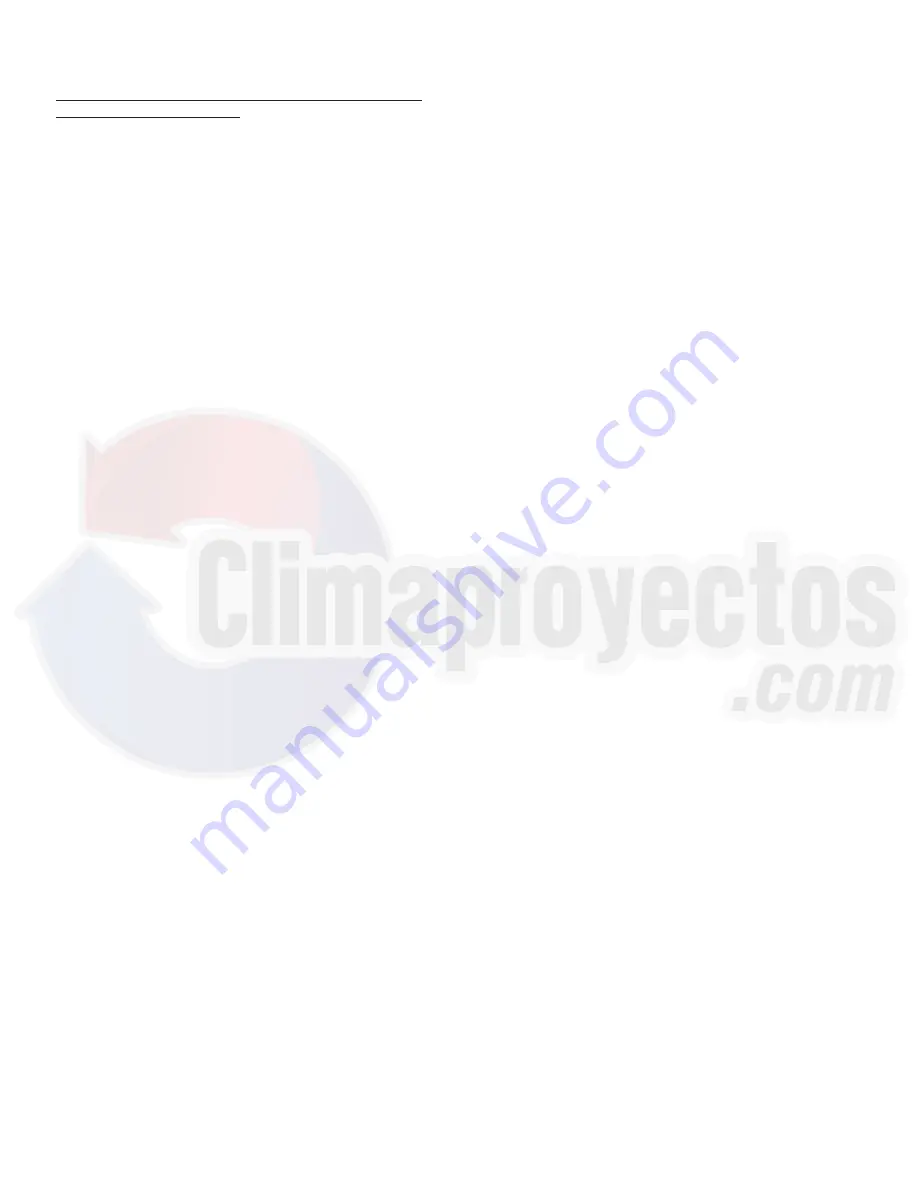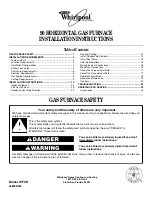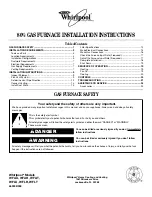
PRODUCT DESIGN
26
Check 2 - Any solid or liquid fuel appliances vented
into this chimney channel.
Solid fuel appliances include fireplaces, wood stoves, coal
furnaces, and incinerators.
Liquid fuel appliances include oil furnaces, oil-fired boilers
and oil-fired water heaters.
Appliances which burn propane (sometimes referred to as
LP (liquefied petroleum)) gas are considered gas-fired ap-
pliances.
Check 3 - Chimney Crown Condition.
Damage from condensate usually shows up first in the
crown. If any of the following trouble signs are present, the
condition of the crown is not satisfactory:
a) Crown leaning
b) Bricks missing
c) Mortar missing
d) Tile liner cracked
e) No tile liner
f) Salt staining at mortar joints. (White stains, and mortar
becomes sandy and/or erodes.)
For problems a, b, or c, see Fix 3. If problems d, e, or f are
present, see Fix 4.
IMPORTANT:
It may be necessary to
follow both Fix 3 and Fix 4.
Check 4 - Debris in Cleanout
A cleanout (dropleg) must be present such that the upper
edge of the cleanout cover is at least 12 inches below the
lower edge of the lowest chimney inlet opening.
A chimney without a cleanout could become partially
blocked by debris. If no cleanout is present, the chimney
must be relined (Fix 4).
Remove the cleanout cover, and examine the cleanout for
debris. If significant amounts of any of the following are
found:
•
Fuel oil residue
•
Bricks
•
Mortar or sand
•
Pieces of the tile liner
•
Rusted pieces of the metallic liner
reline the chimney (Fix 4).
Check 5 - Liner Condition.
If a metal liner is present, it must be checked. It cannot be
assumed that all existing metal liners are correctly installed
and in good condition.
Remove the lowest existing vent connector, and examine
the inside of the elbow or tee at the base of the liner. A
small amount of soot may be considered acceptable, pro-
vided the installer vacuums it away. If rusted pieces of the
liner have collected here, the metal liner must be removed
and replaced (Fix 4).
Next, gently tap the inside of the liner with a Phillips screw-
driver. If the screwdriver perforates the liner, or if the tap-
ping does not sound like metal hitting metal, the liner must
be removed and replaced (Fix 4).
Remember that all appliances must be vented inside the
liner. Venting one appliance inside the liner and another
appliance outside the liner is not acceptable.
Next, use a flashlight and small mirror to sight up the liner.
B vent must be supported so as to not come into direct
contact with the chimney walls or tile liner. If it is not, it can
probably be rehung so as to be acceptable. A thimble or
fire stop may be helpful here.
Flexible liners should be hung straight or nearly straight. If
it is spiraled in the chimney and in good condition, it should
be rehung. To do this, break the top seal; pull up and cut off
the excess liner length, and refit the top seal. Use caution
when doing this, as the cut edges of flexible liners may be
sharp.
The surfaces of the liner must be physically sound. If gaps
or holes are present, the metal liner must be removed and
replaced (Fix 4).
Finally, confirm that the metal liner is the correct size for
the appliances to be installed. Use the GAMA tables and
rules.
If a metal liner is not present, a clay tile liner must be present,
or the chimney must be lined (Fix 4).
Use a flashlight and small mirror at the cleanout or vent
connector to inspect the clay tile liner. If any of the follow-
ing problems are present:
•
Tile sections misaligned
•
Tile sections missing
•
Gaps between tile sections
•
Signs of condensate drainage at the cleanout or vent
connectors
•
Mortar protruding from between tile sections
•
Use of sewer pipe or drainage pipe rather than an
approved fire clay tile
reline the chimney (Fix 4).
Next, measure the size of the liner. It may be possible to do
this from the cleanout. The liner must be at least as large as
the minimum size established by the tables in National Fuel
Gas Code NFPA 54/ANSI Z223.1 - latest edition and in the
National Standard of Canada, CAN/CGA B149.1 and CAN/
CGA B149.2 - latest editions and amendments. If the liner
is too small or too large, then the chimney must be relined
(Fix 4).
Check 6 - Dilution Air.
If gas-fired appliances are to be vented into a clay tile liner,
a source of dilution air is required.
Dilution air cannot be obtained through:
•
Induced draft appliances
•
Natural draft appliances with vent dampers
Sufficient dilution air can ordinarily be obtained through
the draft hood of a natural draft appliance only if the
appliance’s vent connector does not include a vent damper.
















































